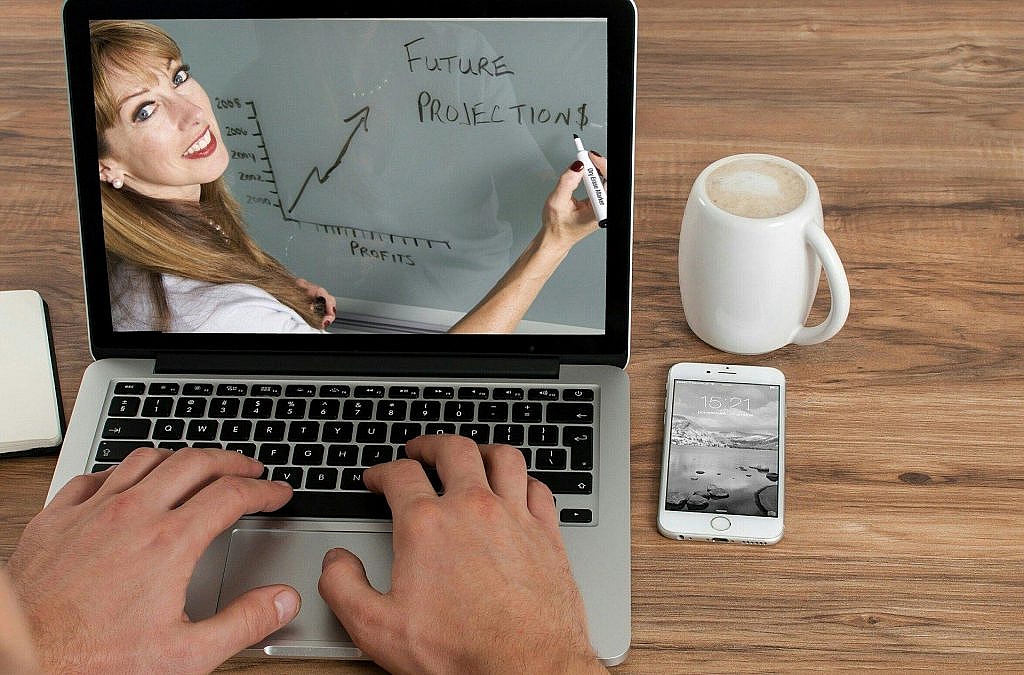How to Run a Web Design Business in the COVID-19 Pandemic

Let’s face it, we’ve all heard about the coronavirus (COVID-19) by now. We’ve also seen it decimate some of our favorite local businesses.
The honest truth is that COVID-19 has changed the way we do business, how businesses market their products and services, and how customers interact with their favorite brands.
It seemed like yesterday when the first case of the virus was first reported to the WHO (World Health Organisation) in China on December 31st, 2019. And from there, we’ve seen outbreak after outbreak throughout most of the world. Because the virus is primarily transmitted from close interpersonal contact, we’ve also seen many countries enforce lockdown measures.
So, with so many restrictive measures in place—what’s it really like to run a web design company in this unfamiliar environment? Here’s how we’ve managed to stay competitive and ensure business continuity during a global pandemic.
The Effects of the Pandemic

It’s important to look at how this pandemic has changed most aspects of business. Around the time that the viral outbreak was declared a pandemic on March 11, many countries in North America and Europe announced official lockdown regulations in order to curb the rapid spread.
Here in Canada, businesses and offices began to close their doors in early March. The vast majority of the workforce is working from home wherever possible. Some businesses, like airlines, cinemas, and restaurants, have been forced to shut down altogether.
Large companies that previously generated hundreds of thousands or millions in revenue closed almost overnight.
In big cities around the world, the first few weeks of these measures were met with a general sense of panic. Some began to stockpile groceries and household necessities. We all saw the people grabbing armfuls of toilet paper, hand sanitizer, and other everyday items.
Now that the initial panic has passed, many of us are looking to the future. While there are more than 60 vaccines in the works, official sources warn that a successful and safe vaccine will not be ready before the end of next year—if at all.
This means that we will likely be living with some form of social distancing in place for many months to come. In other words, this new normal is something we’ll all have to get used to.
While people are coping by developing new at-home routines, many businesses are now looking for new ways to adapt and survive in the new remote world. It’s not hard to see why the old saying “change or die” is more relevant than ever today.
How Does a Web Design Business Run in “Normal Times”?
Let’s first start by clarifying how most web design businesses operate in “normal times.” Before the work from home movement kicked off, GlobalGraphics operated much like any other business. For the most part, our employees worked from a central office.
However, in recent years, we have expanded our capacity to offer extensive online support for our clients. We knew the importance of flexibility in the gig economy, and we started implementing remote solutions for our designers and developers well before COVID-19 arrived.
While the idea of a traditional office is familiar to most—it’s not always practical in the digital age. Digital agencies are more than capable of tapping into an online-only model without compromising on quality and deadlines.
The New Normal: Running a Web Design Business in a Remote World

Photo by Engin Akyurt from Pexels
The spread of COVID-19 has forced us to reimagine our capacity to work-from-home. With our offices closed for the foreseeable future, we have taken drastic steps to transform the way our business is run.
Our aim was to keep operations running largely as they had before. In order to do this effectively, we sought out the best tools for running the office remotely.
Modern cloud-based technology has made remote working possible for our company. Here are a few of the systems we’ve put in place to streamline operations and facilitate remote collaboration and communication.
For Project Management
We previously implemented Basecamp to oversee the progress being made on our various projects. This app allows us to set a series of milestones so that everyone involved with a project can stay up-to-date on what has been done and what needs to be done.
For Meetings

Like many other businesses, we have turned to Zoom for our external client meetings. Zoom allows us to share our screens with clients, making it easy to discuss how a certain project is progressing using a visual aid.
When teams within the company need to meet and discuss projects, we also use Google Meet.
As we no longer have access to a company-wide telephone network, we have turned to Skype for phone calls that do not require video or image technology.
For Emails, Scheduling, and Document Sharing
We have made use of the Gmail Suite for our emails. This system works on any computer, so it is perfect for all of our employees who have their own unique setups at home.
For scheduling meetings, we’ve made use of Google Calendar. Because this connects with the Gmail Suite, we rarely encounter scheduling errors or missed meetings.
Google Docs is another Google application that has made workflow simple and straightforward in our new remote setup.
For Customer Relationship Management (CRM) and Customer Support

To track and monitor our customer relations, the web-based version of ACT! has been instrumental. This exceptional app allows us to keep track of our sales, returning customers, marketing campaigns, and other important statistics.
This app allows potential new customers to get a quick quote. The app then arranges a callback and follow up on our behalf.
The Kayako Support software has been implemented to streamline our customer support service. Using this app, customers are able to register a support ticket from their own homes.
For Accounts and Finances
We’ve also implemented the accounting software Sage Canada Accounts, making it easy to keep track of payments, payroll, and business expenditures. To help our customers make safe payments, we accept a range of online payments, including e-transfer, and cheques in rare cases using our bank’s digital deposit feature.
How Your Business Can Continue in an Online World

As a web design business, the transition has been a natural one. But this isn’t the case for all businesses. Others like cafes, restaurants, and cinemas are struggling to cope with self-isolation measures in place.
However, we believe it is possible to transform just about any business to an online model—so long as they are capable of selling some form of a product or service online or in a way that is compatible with social distancing.
For some businesses, the pandemic may mean the business model itself needs to change in a dramatic way. Here are some examples of how modern technology can help you make a creative transition.
Video Conferencing Apps
Video conferencing apps like Zoom have made it possible for businesses in every sector to conduct effective meetings with clients. Zoom alone surged from 10 million daily active users to over 200 million in just three months.
This technology can be used in a creative way to make client meetings possible for just about anyone. We’ve already seen many businesses get creative with Zoom and other video conferencing apps.
For instance, businesses in the fitness industry have begun to use live video conferencing to lead at-home fitness classes, giving clients the feeling of intimacy and belonging that they once got from attending class in the studio.
Another industry finding success with video conferencing is the private health sector. Several therapists have taken their work online and are able to conduct secure, effective one-on-one therapy sessions with their clients.
Click and Collect Apps
Several applications make it possible for businesses in the retail sector to continue selling their products safely. These apps allow customers to pre-order the items they require.
The technology can then alert the business owner to prepare these items for collection. This type of pre-ordering technology allows some businesses to operate safely and minimise their shipping expenditure.
Virtual Tour Technology
The need for social distancing has taken a serious toll on industries that relied on giving in-person tours. With modern technology, high-quality virtual tours have become a possibility.
In the tourism and art industry, some museums and galleries have made good use of this technology, uploading detailed online tours of their exhibits. In the real estate industry, virtual tours have allowed realtors to show available homes to interested parties.
Food Delivery Services
Many restaurants have come to terms with signing up with the various food delivery services. Not only were these services deemed essential almost everywhere, but they single handedly kept restaurants alive when revenues dropped due to self-isolation measures.
However, these services aren’t perfect either. Many restaurants have complained about high commissions eating away at their already thin margins.
Keep Calm and Business Will Carry On
The devastating COVID-19 pandemic has fundamentally changed the way we all live and work for the foreseeable future.
As individuals and as businesses, it’s up to us to adapt and find new ways of operating in a safe and effective way. The powers of modern technology have made it possible for entire offices to transition to the work from home model.
In fact, by implementing apps efficiently, your company can continue to work, collaborate, and grow just like before.
From all of us at Globalgraphics, thank you for your continued support, and thank you for staying home to protect yourself and others during this difficult time.
